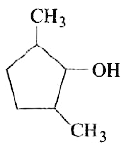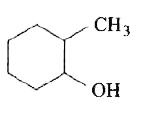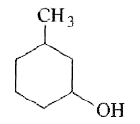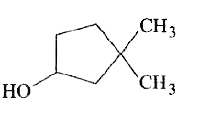On what ground can you say that scandium (Z=21) is a transition element but zinc (Z=30) is not?
On the basis of incompletly filled 3d orbitals of Scandium , [Ar]183d16s2 and completely filled 3d orbitals of Zn,[Ar]183d14s2, they are consider transition and non-transition element respectively.
Topper's Solved these Questions
- D BLOCK ELEMENTSBOOK - RESONANCE ENGLISHCHAPTER - D BLOCK ELEMENTSEXERCISE - MISCELLANEOUS SOLVED PROBLEM (MSPs)
14 Videos
- D BLOCK ELEMENTSBOOK - RESONANCE ENGLISHCHAPTER - D BLOCK ELEMENTSEXERCISE - BOARD LEVEL EXERCISE
21 Videos
- D & F BLOCK ELEMENTSBOOK - RESONANCE ENGLISHCHAPTER - D & F BLOCK ELEMENTSEXERCISE - ORGANIC CHEMISTRY(Aldehydes , Ketones, Carboxylic acid)
15 Videos
- DPPBOOK - RESONANCE ENGLISHCHAPTER - DPPEXERCISE - QUESTIONS
368 Videos
Similar Questions
Why is zinc not regarded as a transition element ? (At. No. Zn = 30)
View SolutionExplain the following terms :
(a) Chemistry of all Lanthanoids is so identical .
(b) Silver atom has completely filled d- orbitals (4d10) in its ground state . How can you say that is a transition elements ?
View Solution
Knowledge Check

Z can be :A B
B C
C D
D
Silver atom has completely filled d orbitals (4d10) in its ground state. How can you say it is a transition element?
View SolutionSilver atom has completely filled d orbitals (4d10) in its ground state. How can you say it is a transition element?
View SolutionScandium forms no coloured ions, yet it is regarded as a transition elements. Explain why?
View SolutionExplain the following observation:
(i) Generally there is an increase in density of elements from titanium (Z=22)to copper (Z=29) in the first series of transition elements.
(ii) Transition elements and their compounds are generally found to be catalysts in chemical reactions.
View SolutionA particle executes simple harmonic motion. If you are told that its veocity at this instant is Zero can you say what is its displacement? If you are told that its velocity at this instant is maximum, can you say what is its displacement?
View SolutionExplain the following observations about the transition/ inner-transition elements :
(i) There is in general an increase in density of elements from titanium (Z=22) to copper (Z=29).
(ii) There occurs much more frequent metal-metal bonding in compounds of heavy transition elements (3rd series).
(iii) The members in the actinoid series exhibit a large number of oxidation states than the corresponding members in the lanthanoid sereis
View SolutionIn What way is the electronic configuration of the transition elements different from the of the non-transition elements?
View Solution
